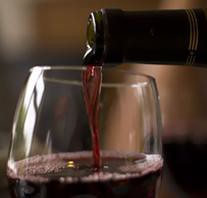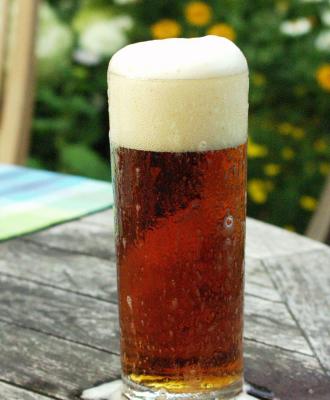Benefits of Red Wine
Thursday, September 18, 2008
Photo by: kingriversza's
We have heard over the past few years that drinking a couple glasses of red wine each day is good for you. So, is wine good for you. Let's look at some evidence.
"Many studies investigated the benefits of red wine suggested that moderate amount of red wine (one drink a day for women and two drinks a day for men) lowers the risk of heart attack for people in middle age by ~ 30 to 50 percent. It is also suggested that alcohol such as red wine may prevent additional heart attacks if you have already suffered from one. Other studies also indicated that red wine can raise HDL cholesterol (the Good cholesterol) and prevent LDL cholesterol (the Bad cholesterol) from forming. Red wine may help prevent blood clots and reduce the blood vessel damage caused by fat deposits. Indeed, studies showed that people from the Mediterranean region who regularly drank red wine have lower risks of heart disease." Source: Health Castle
"Research scientists in North Carolina have announced discovery of how a chemical found in red wine helps to fight cancer.
The study may help explain the controversial "French paradox," the apparent lower rates of heart disease and some cancers among the French, despite a typical national diet high in fat.
Compared to other nationalities in Europe, the French eat more beef, cheese, butter and other artery-clogging foods. But they also drink more wine, and researchers have speculated that certain compounds in grapes and grape products like wine offer some kind of protection from the negative effects of the high-fat diet.
The new research identified the workings of a key cancer-related substance: trans-Resveratrol, often called Res.
In addition to red grapes, Res is found in mulberries, raspberries, peanuts, muscadine grapes, including scuppernongs, and many other fruits and nuts, said the research scientists at the University of North Carolina at Chapel Hill. Source: CNN
Ok, so far we have found evidence that red wine is good for the heart and may fight cancer. What are some of the other benefits?
* Reduced risk of death from nearly all causes
* Red wine, with or without alcohol, decreases the harmful effect of smoking on the endothelium - layer of cells that provide a friction-reducing lining in lymph vessels, blood vessels, and the heart.
* Heart disease
* Blood Clots - Red wine produces anticlotting, or antithrombotic, action.
* Atherosclerosis - Red wine may prevent the initiation and progression of atherosclerosis (hardening or "furring" of the arteries).Hypertension - two glasses of red wine (250 ml), taken together with the meal, lower post-meal blood pressure in hypertensive persons.
* Kidney stones: Red wine intake reduces the risk of kidney stone formation.
* Alzheimer's disease: Moderate wine drinking correlates with a lower risk for Alzheimer's disease. Researchers found that resveratrol, a red wine polyphenol, produces neuroprotective effects.Source: C. Simmons of HealthAssist.net Dumb Little Man
So what makes red wine so healthy?
All of a grape’s protective flavonoids are in the “must”, a chunky mixture of grape skins, pulp, seeds, and stems that is used to make wine and grape juice. When must is fermented to make wine, a lot of flavonoids are drawn into liquid. Since grape juice isn’t fermented, you get only flavonoids that are drawn into the juice during processing stages. The compounds that end up in the drink are still pretty strong...
Since flavonoids are what give juice its reach purple hue, if you’re looking for the grape juice with most flavonoids, pick the darkest variety. Source: Foods That Heal
Pretty strong evidence that a couple of glasses of red wine a day are good for you. Just another reason why I make my own.

 Follow Me On Twitter
Follow Me On Twitter





